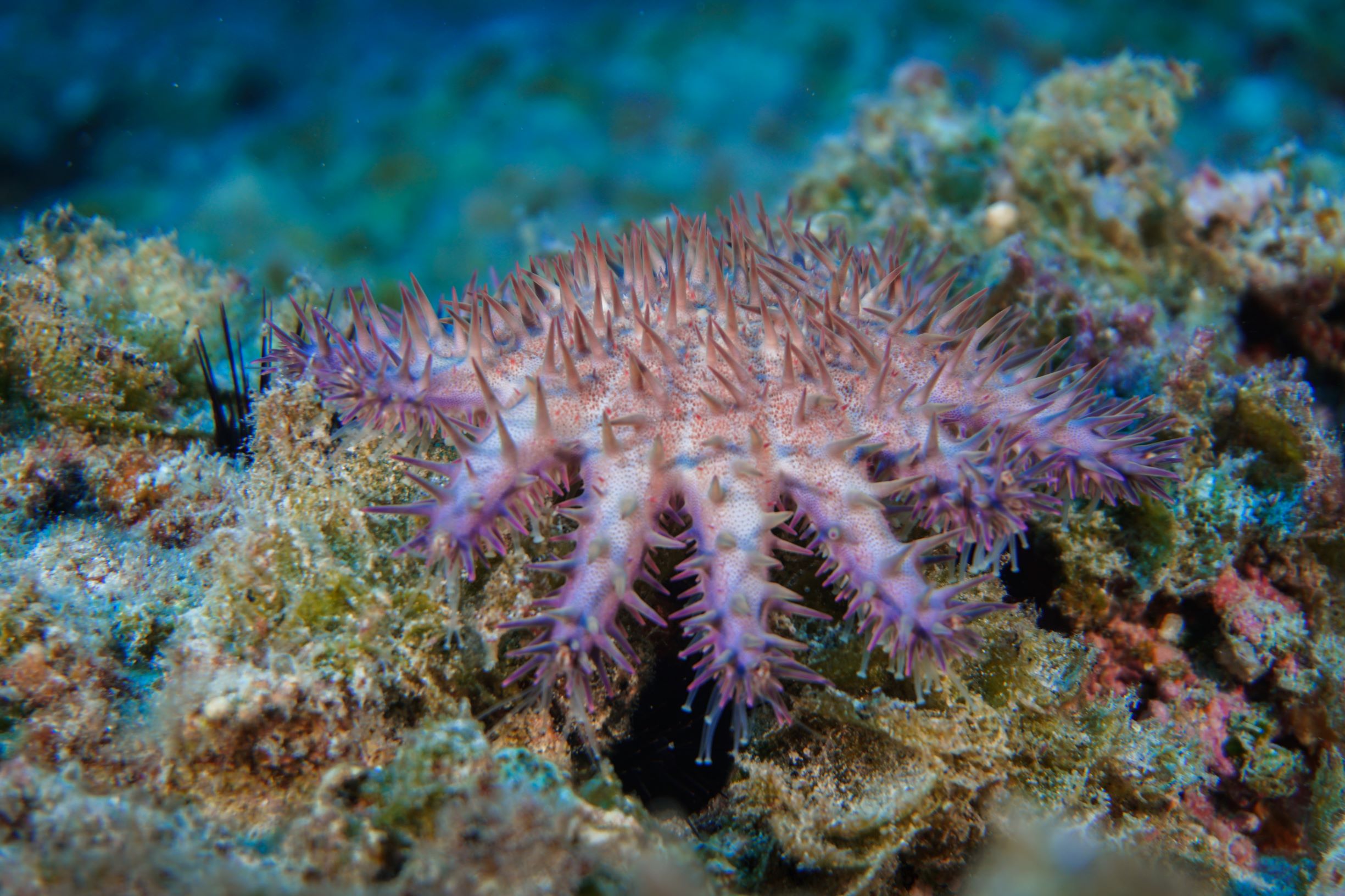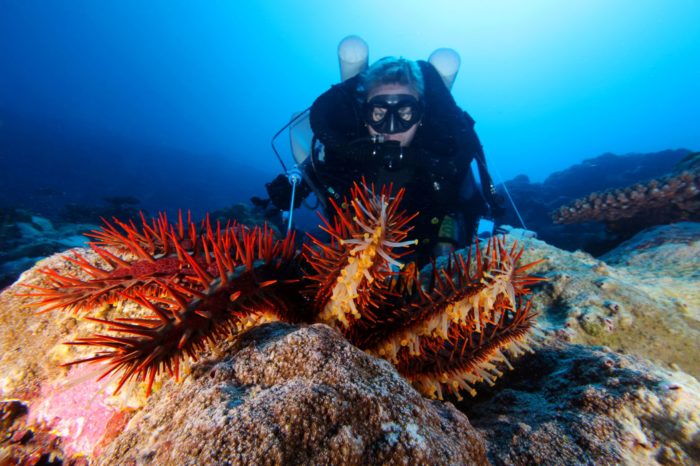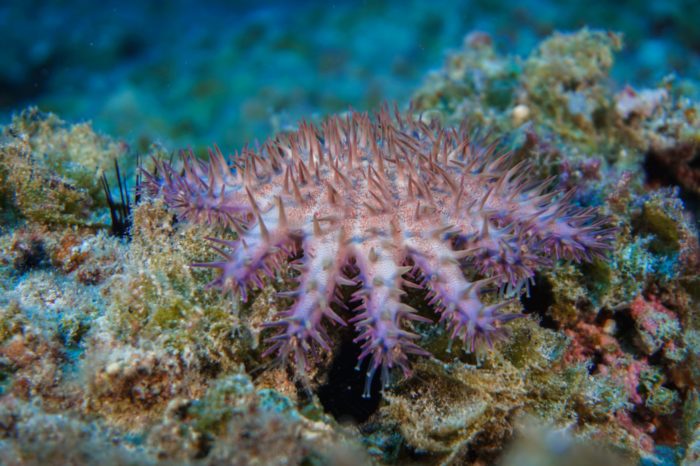
Sea Wonder: Crown of Thorns Starfish
Though they are beautiful, they are also fierce! Named for their thorny appearance, crown of thorns starfish (Acanthaster planci) are not the kind of starfish you want to find in an aquarium touch tank. These prickly critters are covered in venomous spines and feed on stony corals. And, they can reach some pretty large sizes compared to most common sea stars. If their populations are not kept in balance, they can cause some serious damage to reefs and the surrounding ecosystem.
Description
These beautiful sea stars have orange-red or purple skin covered in yellow or pink spines. Their bodies are similar to other starfish with a central disk that contains most of its organs and arms that extend from the center. They differ from other species of starfish in that they are disc-shaped (more rounded), have upwards of 20 flexible arms (while most other sea stars have five), and are covered in spines. Adult crown of thorns starfish are also much larger than other species of starfish, reaching maximum diameters of nearly 14 inches.
Diet and Habitat
Crown of thorns starfish eat stony corals, particularly rice corals, lace corals, and cauliflower coral, so naturally they live on or near coral reefs. Their range includes the Indo-Pacific region, spanning from the Red Sea to Japan, the Gulf of California, and Australia. They are common on the Great Barrier Reef and can be seen in National Marine Sanctuary of American Samoa. In fact, in the 1970s, crown of thorns starfish killed nearly 80% of reefs in American Samoa, in part leading to the designation of the sanctuary.
To feed, an individual will cover a coral colony, before expelling its entire stomach through its mouth, covering the coral in digestive enzymes and using cilia (a type of hair-like cell) along the stomach lining to move their prey into their digestive tract before swallowing its stomach back into its body. When populations are in balance, the crown of thorns starfish fills a necessary role in the ecosystem by ensuring species diversity and making room for new coral settlements, but when there are too many starfish or the reefs are already sick or stressed, their feeding habits can be destructive. Scientists aren’t sure of the species’ exact predators, but we know the giant triton, a type of sea snail, is its primary predator, though observations of arms that are fully or partially missing suggest other animals at least attempt to feed on them.
Life History

Crown of thorns starfish reproduce by spawning (releasing gametes into the water column for fertilization) and begin their lives as small, planktonic polyps that travel with water currents after hatching. Their life cycles include five distinct stages, with the last one being adulthood, which they reach at around two years old (when they also reach their full size). These starfish can also reproduce asexually if one of their arms are ripped off by a predator or other physical trauma.
They aren’t particularly social animals though they are often observed in groups, and they use chemical and tactile stimuli to find food, mates, and otherwise perceive their environment. Their venomous spines help with movement along the seafloor
Threats and Conservation
They are certainly not threatened or endangered, but they do pose a threat to and endanger coral communities in the Indo-Pacific region. Limited by the amount of coral available to eat, crown of thorns starfish populations are naturally fairly small, but outbreaks are thought to occur when their predators are overfished. Scientists and community members often try to monitor and take action to keep populations of this species in check, with historically mixed results. Around 2012, the crown of thorns starfish population began to explode again in American Samoa. Scientists believe land-based pollution and runoff caused most of the outbreak while other theories point to the 2009 tsunami which stirred up nutrients from the ocean floor. The excess nutrients in either case help these starfish develop in the larval stage. In response, NOAA’s Coral Reef Conservation Program, National Marine Sanctuary of American Samoa, and other partners supported efforts to remove crown of thorn starfish from American Samoa and help recover the ecosystem.

